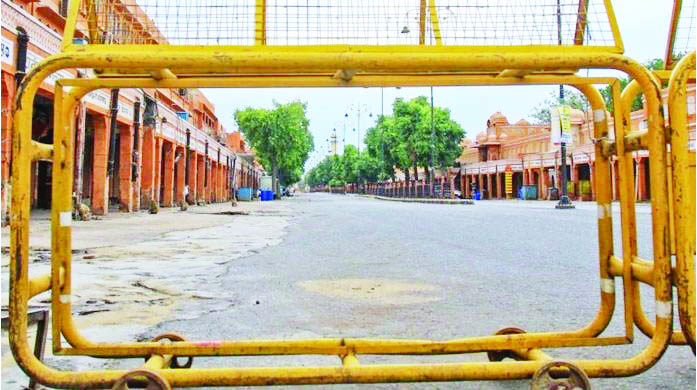PREVENTIVE: Proving that prevention is better than cure the Cambridge University medical lab has developed a vaccine which is already under going human trials. If it proves successful it can halt coronavirus before it gets an opportunity to spread
By Ankit Kumar
Cambridge which is the first medical centre to come out with a vaccine outlines how the pandemic in India can be treated without lockdown. The Cambridge vaccine is already being produced in India within a month of its introduction with human trials being conducted on volunteers. …..
A mathematical model developed by two Indian-origin University of Cambridge scholars has predicted that the current 21-day lockdown may not be enough to contain the spread of the novel coronavirus in the country. Instead, the model puts forth two alternative models of lockdown that could help slow down the spread of the virus
As the world battles the threat of the novel coronavirus, policymakers and researchers are frantically looking for ways to predict the virus’s spread and effects. So far, novel coronavirus has proven to be too fast to be chased and contained. Countries have placed restrictions on movement on people with the hope that social distancing techniques will help contain the spread of the virus. India, too has taken such measures, imposing a 21-day lockdown across the country.
However, a new mathematical model created by two Cambridge University scholars of Indian origin, predicts that the current lockdown may not be enough to contain the novel coronavirus. The proposed model, devised by Rajesh Singh and R. Adhikari from the University of Cambridge’s Centre for Mathematical Sciences, argues that India’s unique social contact structure may cause the virus to behave differently here than in China (where the novel coronavirus originated) and Italy (the worst affected country).
The model compares case data, age distribution and social structures of India, China and Italy and uses another popular model known as Prem et.al, which projects social contact matrices in 152 countries using contact surveys and demographic data. The Cambridge model identifies typical Indian homes as the main channel of transmission between three generations.
While a lesser number of such contacts are likely to exist in China, the numbers are negligible in Italy compared to India. The use of social contact structure has been the core of Germany’s planning against Covid-19; Germany has seen the lowest mortality rate in Europe. In simple language, Germany has made sure that their grand-parents, who are the most vulnerable to the novel coronavirus, stay away from their grandchildren who are the most efficient spreaders of the disease.
•A 21-day lockdown at this stage will not be enough to contain the virus spread.
•A quick resurgence of the outbreak will follow soon after lockdown is lifted.
•The model calculates 2727 likely deaths in a span of 73 days despite the lockdown.
•The model notes possibility of likely transmission between three generations at Indian homes.
•In India, 15-19-year-olds could be the most prominent carriers of the virus.
•In India, 60-64-year-olds are likely to suffer the highest mortality rate.
The mathematical model also calculates the duration and intervals of two other versions of lockdowns that can actually bring down the infection level to less than 50 people:
•Three consecutive lockdowns with the first one lasting 21 days, second 28 days and third one for 18 days, could work mathematically.
•The model suggests a five-day gap between each lockdown.
•This strategy could bring down the number of infections to less than 50 by mid-June.
•Another alternative suggests a 49-day nonstop lockdown.
•A 49-day lockdown could bring the number of infections down to less than 50 by mid-May
LIMITATIONS OF THE MODEL
While looking at mathematical models, it’s important to understand their limitations. The proposed Cambridge model has some of its own limitations as the paper notes, “It is possible to have differentiated controls which apply distinct social distancing measures at different times and for different durations, we do not explore these here as the general setting”.
The paper does not use the advanced “optimal control theory” of applied mathematics that could predict the results of varying control measures during the course of action. Interestingly the paper puts a caveat with a quote from famous British statistician George E.P. Box who once said “all models are wrong, but some are useful”.
POSSIBLE USE OF THE MODEL
So far, the government of India has dismissed reports of extending the 21-day lockdowns. However, officials familiar with the issue have told India Today TV that areas with significant numbers of Covid-19 patients could be identified as hot zones and separate measures could be used in these areas even after the 21-day lockdown ends. A scientific model such as this could come in handy in containing such hot zones. However the required duration of a possible extended lockdown in these cases would vary according to local data.
Courtesy:www.indiatoday.in
